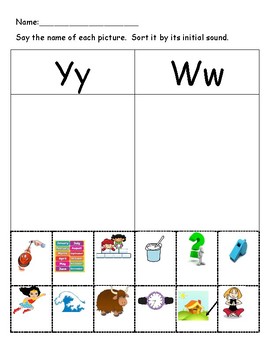
Therefore, the algorithm performs O ( log n ! ) O(\log n!) O ( lo g n ! ) comparisons. Comparisons happen, and we keep traveling down the tree until the algorithm reaches the leaves of the tree, there will be a leaf for each permutation, so there are n ! n! n ! leaves.Įach comparison halves the number of future comparisons the algorithm must do (since if the algorithm selects the right edge out of a node at a given step, it will not search the nodes and paths connected to the left edge).
X word sort series#
This is a decision tree because each of the n ! n! n ! is represented by a leaf, and the path the algorithm must take to get to each leaf is the series of comparisons and outcomes that yield that particular ordering.Īt each level of the tree, a comparison is made.

Because the sorted list is some permutation of the input list, for an input list of length n n n, there are n ! n! n ! possible permutations of that list. The running time of comparison-based sorting algorithms is bounded by Ω ( n log n ) \Omega(n \log n) Ω ( n lo g n ).Ī comparison sort can be modeled as a large binary tree called a decision tree where each node represents a single comparison. There is only one permutation of a list that is sorted, but n ! n! n ! possible lists, so the chances that the input is already sorted is very unlikely, and on average, the list will not be very sorted. The "on average" part here is important: there are many algorithms that run in very fast time if the inputted list is already sorted, or has some very particular (and overall unlikely) property. A lower bound for an algorithm is the worst-case running time of the best possible algorithm for a given problem. There are two broad types of sorting algorithms: integer sorts and comparison sorts.Ĭomparison sorts compare elements at each step of the algorithm to determine if one element should be to the left or right of another element.Ĭomparison sorts are usually more straightforward to implement than integer sorts, but comparison sorts are limited by a lower bound of O ( n log n ) O(n \log n) O ( n lo g n ), meaning that, on average, comparison sorts cannot be faster than O ( n log n ) O(n \log n) O ( n lo g n ). For example, is sorted alphabetically, is a list of integers sorted in increasing order, and is a list of integers sorted in decreasing order.Ī sorting algorithm takes an array as input and outputs a permutation of that array that is sorted.
X word sort download#
Visit Word Lists for a free download of the words included.Īn online word family sort (with short vowels) from Read, Write, Think based on Flash works with the workaround at the End of Flash.In other words, a sorted array is an array that is in a particular order. An empty Extra Refreshers gum container works great for mixing up and drawing the cards.Ĭheck out the Phonics Pow Toolkit and get your free Word Sort Games – Download pdf.

Tabbed index cards are helpful for dividing sections.

Place word sorts in small ziplock bags with labels, and keep in quart ziplock bags with expanding bottoms by sections, or in a Sterlite flip top box.
X word sort how to#
How to set up and organize: Print on cardstock and punch pieces with 1″ circle punch or cut out. ā is gray, ē is green, ī is white, ō is gold, ū is blue. Below is an index of all the sorts included. Many of the phonogram cards include color clues.


 0 kommentar(er)
0 kommentar(er)
